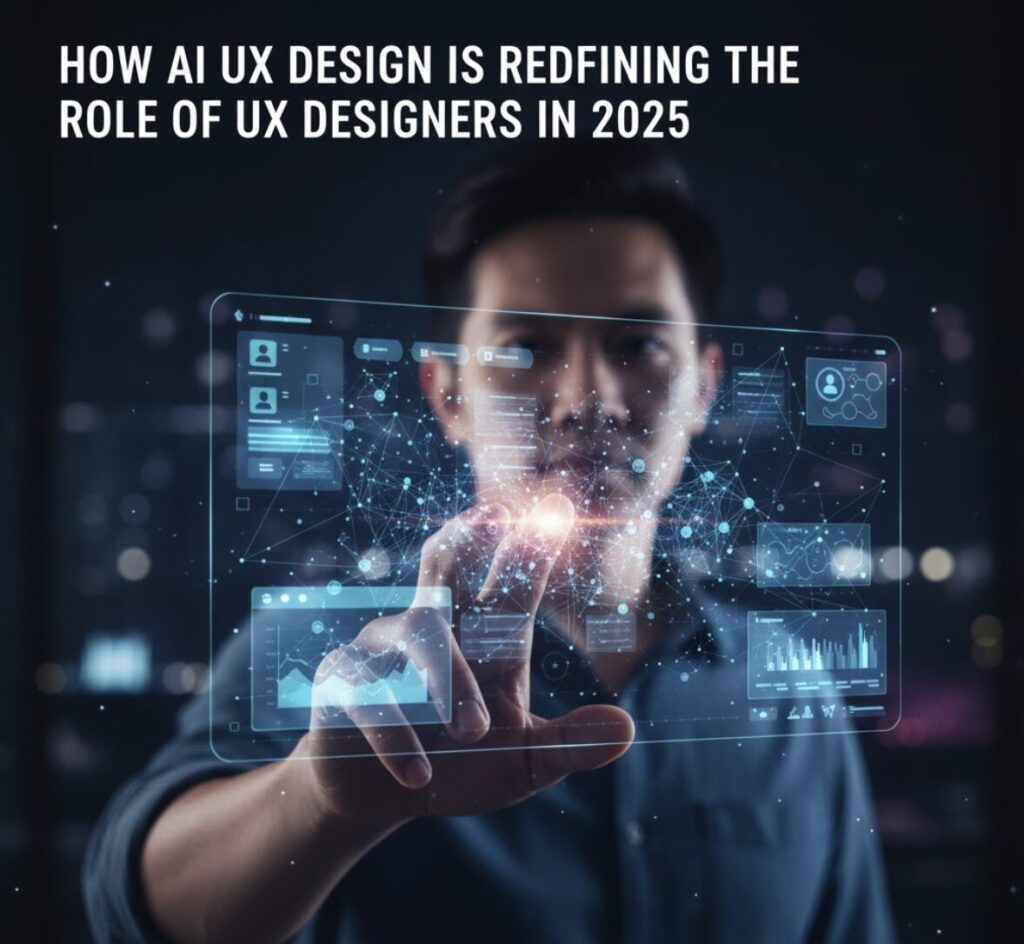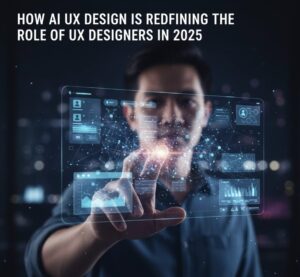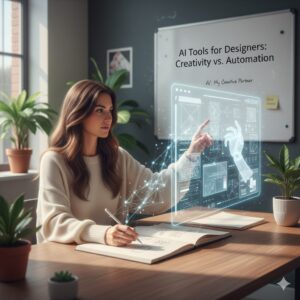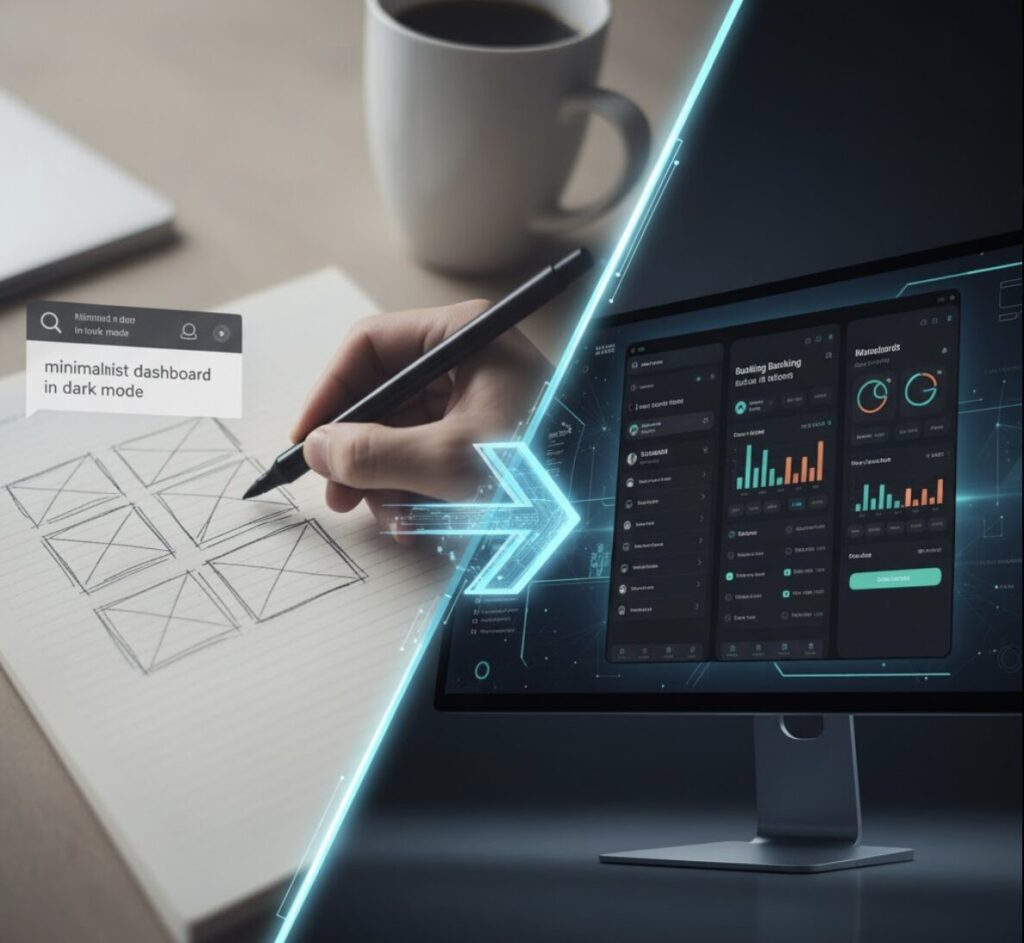
The evolution of AI UX design in 2025
The design landscape has transformed dramatically in recent years, and by 2025, artificial intelligence (AI) has become a central part of how we create and refine digital experiences. AI UX design is more than a buzzword it’s the driving force behind faster iterations, smarter insights, and more personalized interfaces.
Designers today must balance creativity with data-driven intelligence, learning to collaborate with AI systems that can anticipate user needs and generate functional prototypes almost instantly.
The growing influence of AI UX design in the industry
AI is no longer an experimental feature in design it’s an integral part of the workflow. From analyzing user behavior to generating layouts automatically, AI is transforming the design process from the ground up.
The rise of AI UX Design assistants
Tools such as Figma, Midjourney, and Uizard are merging human creativity with machine precision. These platforms empower designers to create, iterate, and validate ideas faster than ever, without compromising quality or intent.
AI UX design tools transforming the creative process
Figma’s AI UX Design integration
Figma’s AI features are redefining collaborative design. With smart automation, designers can prompt the system to generate layouts, color palettes, or even full user flows. Commands like “Create a sign-up flow for a mobile app” deliver a usable framework in seconds, letting designers focus on refining user interactions and storytelling.
Midjourney and Visual imagination in AI UX design
Midjourney expands what’s possible in the early design phase. Instead of static mood boards, designers can now generate vivid UI concepts from simple text prompts such as “minimalist banking dashboard in dark mode.” It’s a creative accelerator that inspires fresh directions and visual exploration.
Uizard and the Prototype Revolution in AI UX Design
Uizard bridges the gap between concept and validation. A designer can upload a sketch or describe an interface, and the tool will produce a functional digital prototype ready for user testing. This rapid transformation from idea to interface makes design iteration faster and more collaborative.
Other AI UX Design Tools to Know in 2025
Beyond the big three, tools like Galileo AI, Runway, and Diagram are revolutionizing how teams handle animation, accessibility, and responsive layouts. Together, they form an ecosystem that supports the entire UX lifecycle from ideation to launch.
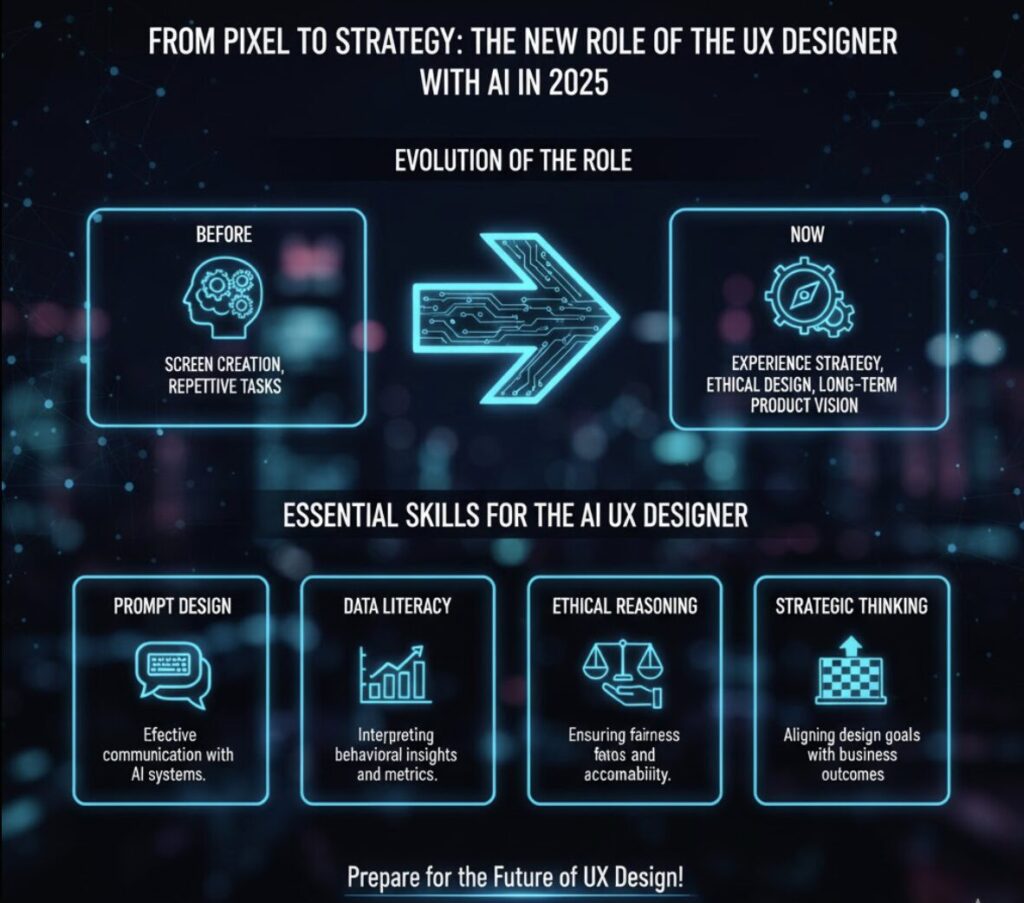
AI UX design vs. Human creativity: A new collaboration
Is AI UX design replacing human designers?
Not at all. While AI can automate repetitive design tasks, it cannot replicate empathy, intuition, or ethical judgment. These are core to the designer’s craft. AI assists, but the creative direction still relies on human vision and understanding.
How AI UX Design is evolving toward strategy
UX designers are shifting from pixel-perfect execution to strategic problem-solving. Their new focus is experience strategy, ethical design, and long-term product vision—areas where AI can support but not lead.
The new role of designers in AI UX design
From Execution to Strategy in AI UX design
By 2025, UX designers are no longer limited to screen design. They are product thinkers who collaborate with AI to deliver more holistic user experiences. Their role involves orchestrating how automation, data, and creativity converge to meet business and user goals.
Collaborating with AI tools in UX design
AI is not a rival—it’s a creative partner. Designers who embrace this mindset can guide AI toward better outcomes, ensuring that each decision aligns with user needs, ethics, and inclusivity.
Ethics and Responsibility in AI UX design
Understanding Bias in AI UX Design Systems
AI models learn from data, and data can be biased. This means designers have a critical role in ensuring that their tools and products promote fairness. Continuous testing, diverse datasets, and user transparency are key to minimizing bias in AI-driven experiences.
Designing for trust in AI UX experiences
As more interfaces are powered by algorithms, users must understand what’s happening behind the scenes. Transparency builds trust informing users when AI is involved, explaining how their data is used, and offering clear control options.
Preparing for the Future of AI UX design
Skills every designer needs for AI UX design in 2025
To stay relevant, UX designers should focus on:
- Prompt design — communicating effectively with AI systems.
- Data literacy — interpreting behavioral insights and metrics.
- Ethical reasoning — ensuring fairness and accountability.
- Strategic thinking — aligning design goals with business outcomes.
Continuous learning in the world of AI UX design
The key to thriving in AI-driven environments is adaptability. Designers must remain curious experimenting with tools, learning from data, and constantly rethinking their creative process. AI is evolving fast, and so should we.
How Wandr helps teams thrive in the age of AI UX design
At Wandr, we help organizations bridge the gap between human creativity and AI-powered design. Our approach integrates tools like Figma AI, Midjourney, and Uizard into product workflows to create experiences that are both efficient and human-centered.
We guide teams to adopt AI responsibly balancing automation with strategic design thinking to ensure products remain user-first while taking full advantage of AI innovation. In a world of AI UX design, Wandr helps companies not just adapt, but lead.
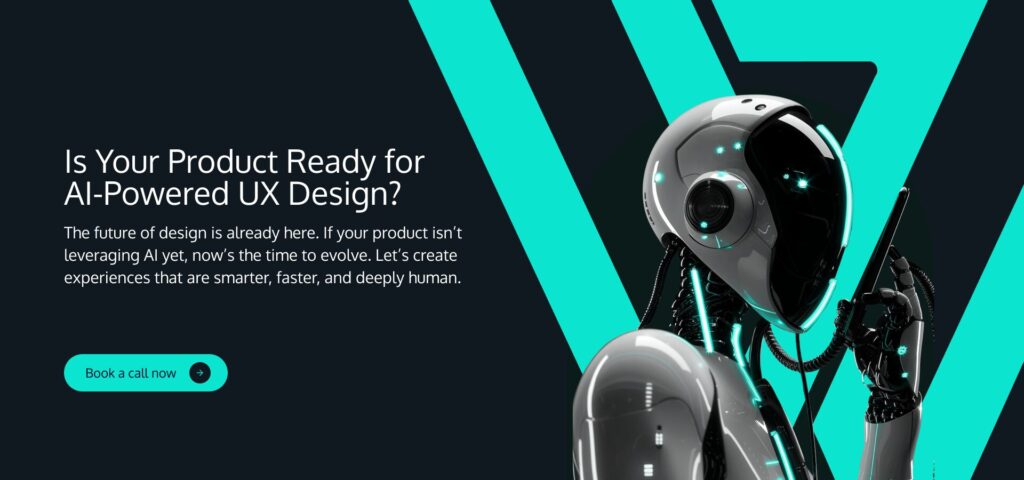
Conclusion: Embracing the future of AI UX design
AI isn’t replacing UX designers it’s expanding their potential. By automating the routine, it gives space for what truly matters: empathy, ethics, and innovation. The next generation of UX will be defined by those who can harmonize human insight with artificial intelligence.
FAQs
1. Will AI completely automate UX design?
No. AI supports designers by handling repetitive work, but human creativity and emotional understanding remain essential.
2. What AI UX design tools should designers learn in 2025?
Figma AI, Midjourney, Uizard, Galileo AI, and Runway are key tools reshaping the UX field.
3. How does AI impact user research in UX design?
AI speeds up data analysis but still requires human interpretation to uncover motivations, needs, and context.
4. Are there ethical risks in AI UX design?
Yes. Bias and lack of transparency are ongoing challenges, which is why ethical awareness is now a must-have skill.
5. How can companies prepare for AI-integrated UX workflows?
By investing in design education, prompt engineering, and partnering with teams like Wandr that understand how to blend strategy with AI.

